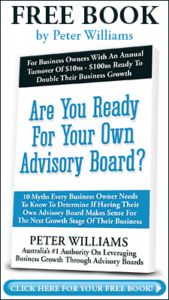The fast food giant McDonald’s is a well-worn and enduring staple of the food industry, but those old enough to remember the restaurant bursting onto the scene with enormous growth in the 1960s and 1970s, it seemed as though the brand had come out of nowhere to decisively capture their market.
McDonald’s started 78 years ago, and now it’s selling 75 hamburgers per second and has a revenue somewhere around $22,000,000,000 per annum—but McDonald’s actually started out as a very small company. By 1958, McDonald’s had already sold its 100 millionth hamburger, but most people still didn’t know who McDonald’s was, even in America.
What most people don’t know to this day is that legendary McDonald’s founder Ray Kroc did not revolutionise business or the burger industry by inventing the fast food restaurant.
In 1954, Ray Kroc visited a small but successful restaurant in California run by the brothers Dick and Mac McDonald. The McDonald brothers’ idea was actually for a barbecue restaurant modeled off of the American drive-up restaurants where a waitress would deliver food to people who drove up in their vehicles. They initially started their restaurant in 1940.
What made the McDonald brothers’ idea revolutionary was their refinement of the speed with which the orders could get out to customers, and they applied the assembly line techniques that are now so familiar in fast food restaurants.
Kroc was stunned by the McDonald Brothers’ effectiveness and emphasis on fast service. In 1955, Kroc joined the business, and later patented the MacDonald’s processes, but it would still be many years before McDonald’s was on its way to being the success it turned out to be.
Of course, the McDonald brothers had no idea that the business they started in 1940 would wind up selling in 1961 for $2.7 million dollars, and in later years it would be worth billions.
Among the things that made McDonald’s attractive to almost every part of the population over the years has been the range of products that they sell, and their appealing directly to those segments. It’s quite an incredible company when you think about it, because you know it means that they’re always developing something new.
Take the ‘Happy Meal’, for example. It’s been around for quite a long time now. It was introduced in 1979, but for many adults living now, it’s something that’s always been around, that was likely a part of their childhood.
From an efficiency standpoint, of course anything we can do to speed things up is just what we do today. That’s another key reason McDonald’s became popular to begin with. It’s easy, convenient and everyone seems to love it.
When a business like McDonald’s revolutionises an industry, in the long run it helps other business out with systemisation processes. When you look at sort of the recent innovations they’ve had—such as the ability to audit your own food when you first walk in and not annoy the counter staff, there’s a lot of work and research gone into these kinds of things.
The active systems that big companies like these have implemented, with time and motion studies and focus groups ultimately created a company that can be operated by a bunch of 17-year-olds.
It just goes to show that the business you start is not always the business you end up with, and there’s no such thing as an “overnight success”!

